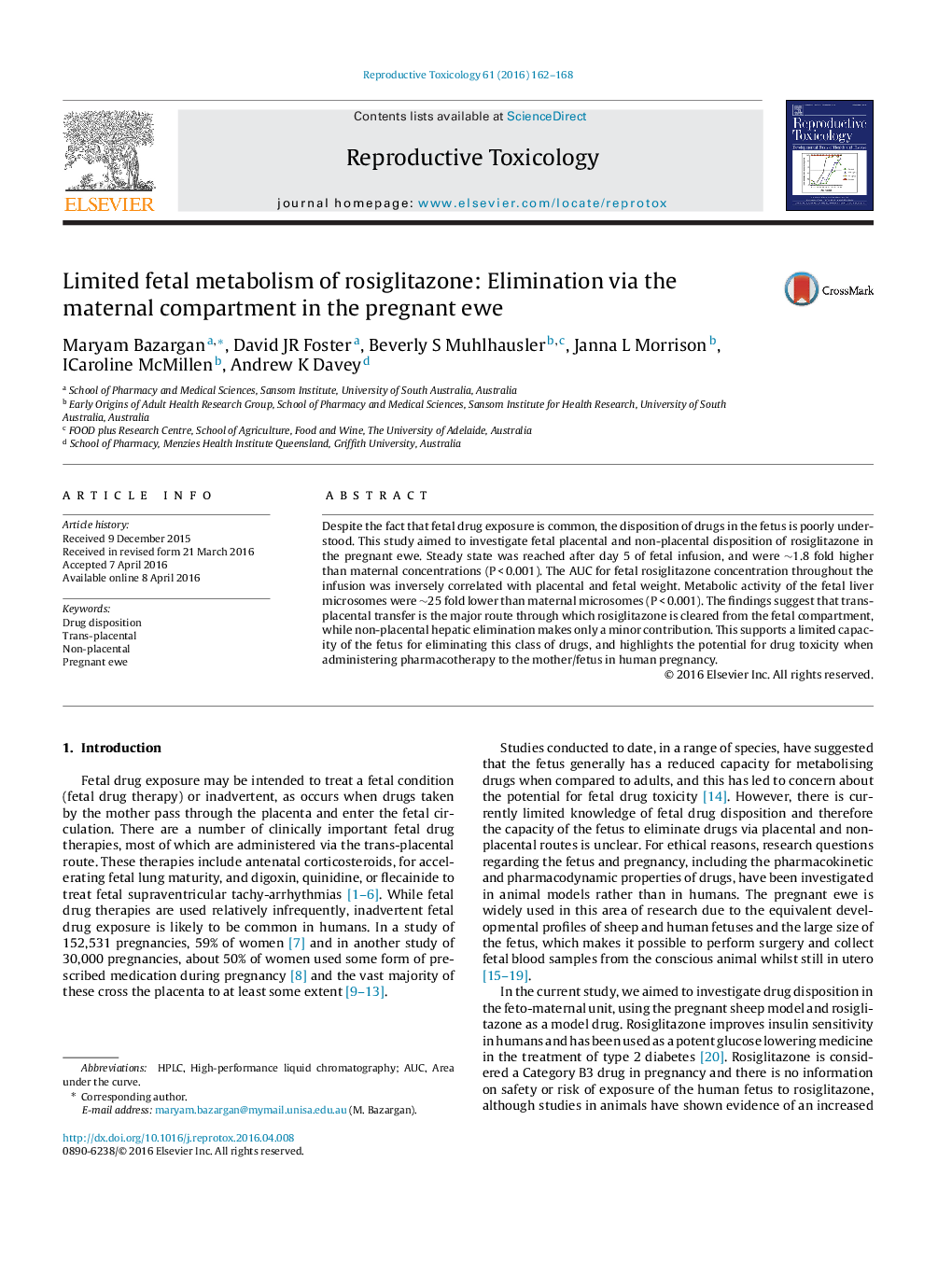| Article ID | Journal | Published Year | Pages | File Type |
|---|---|---|---|---|
| 5858002 | Reproductive Toxicology | 2016 | 7 Pages |
Abstract
Despite the fact that fetal drug exposure is common, the disposition of drugs in the fetus is poorly understood. This study aimed to investigate fetal placental and non-placental disposition of rosiglitazone in the pregnant ewe. Steady state was reached after day 5 of fetal infusion, and were â¼1.8 fold higher than maternal concentrations (PÂ <Â 0.001). The AUC for fetal rosiglitazone concentration throughout the infusion was inversely correlated with placental and fetal weight. Metabolic activity of the fetal liver microsomes were â¼25 fold lower than maternal microsomes (PÂ <Â 0.001). The findings suggest that transâplacental transfer is the major route through which rosiglitazone is cleared from the fetal compartment, while nonâplacental hepatic elimination makes only a minor contribution. This supports a limited capacity of the fetus for eliminating this class of drugs, and highlights the potential for drug toxicity when administering pharmacotherapy to the mother/fetus in human pregnancy.
Keywords
Related Topics
Life Sciences
Environmental Science
Health, Toxicology and Mutagenesis
Authors
Maryam Bazargan, David JR Foster, Beverly S Muhlhausler, Janna L Morrison, ICaroline McMillen, Andrew K Davey,
